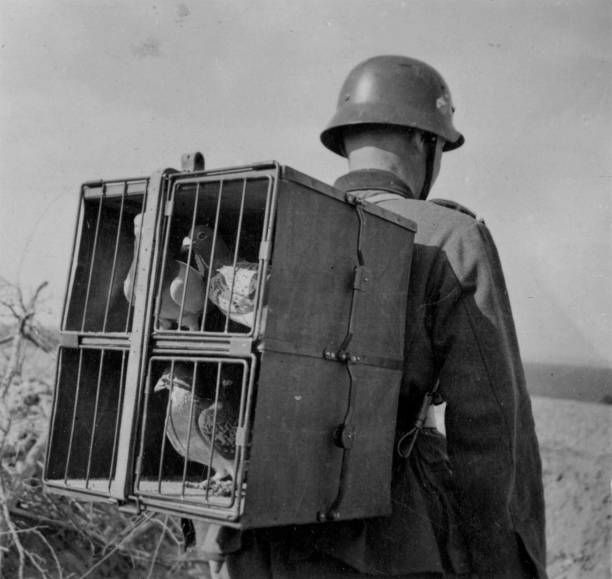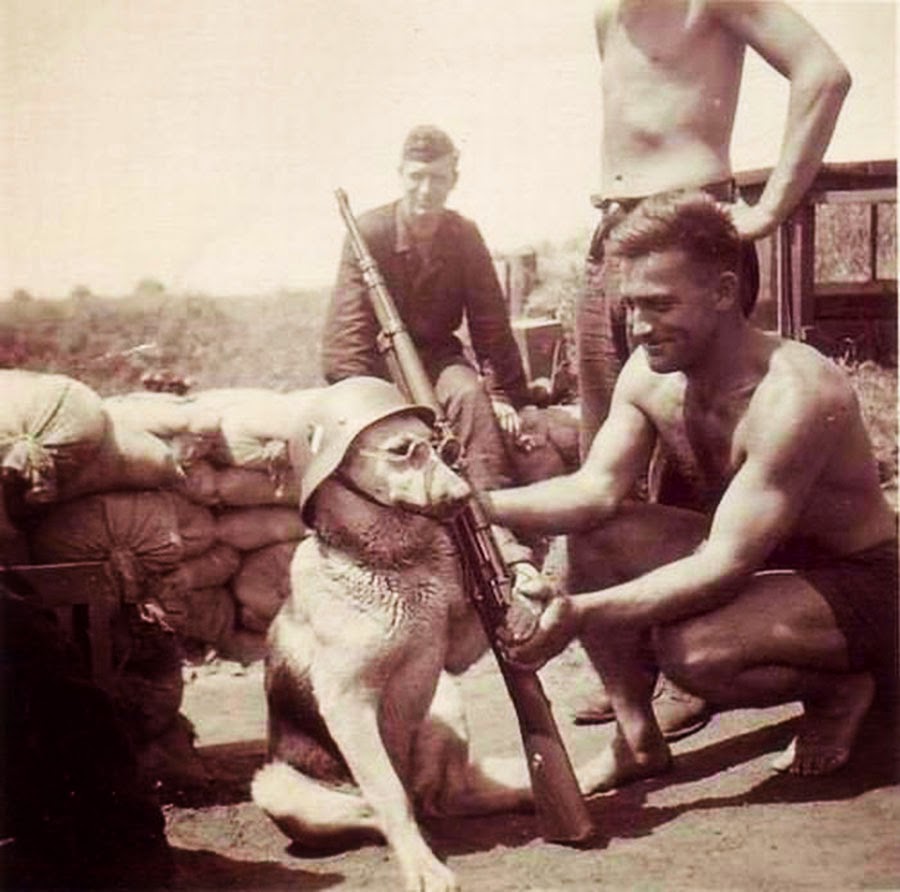Re: WWII images
Posted: Thu May 29, 2025 3:41 pm
German soldier with early twitter interface.

Also, a Hund undergoes training after conscription.

Also, a Hund undergoes training after conscription.


Nazgul wrote: ↑Fri May 30, 2025 9:16 am 25 May 1948 Witold Pilecki was a Polish soldier who fought in the 1920 & 1939 wars, in September 1940 he made a successful attempt — under the false identity of Tomasz Serafiński — of becoming a prisoner of the German Auschwitz camp where he co-founded the camp resistance. He escaped in April 1943 & wrote a report about the crimes in the camp.
After his escape, Pilecki participated in the Warsaw Uprising, he was a POW at the Lamsdorf & Murnau camps. During the communist terror in Poland, he was sentenced to death and execute on 25 May 1948.

Yeah, yeah! And several bullets miraculously just passed through his clothing!At one point during the journey, [after his ‘escape’ from Auschwitz] German soldiers attempted to stop Pilecki, firing at him as he fled; several bullets passed through his clothing, while one wounded him without hitting either bones or vital organs.
https://en.wikipedia.org/wiki/Witold_Pilecki

Is this a typo in the original caption, Nazgul: assuming this should be "the plane hit a supply of ammunition"?Nazgul wrote: ↑Fri Jun 06, 2025 11:24 am The trace of the crash of a Japanese kamikaze plane on the hull of the HMS Sussex, Pacific.
The first kamikaze attack took place on the occasion of the battle of Leyte (October 23-26 1944), off the island of Luzon (Philippines). She sinks an escort aircraft carrier survivor of the Battle of Midway, USS St Lô. But this Japanese success is misleading: the ship sank because the bomb hit a supply of ammunition by an extraordinary bad luck.
Subsequently, suicide attacks yield mixed results. Dozens of ships suffer impacts. Japanese naval aviation, however, is short of equipment and more experienced pilots. These are reserved for perilous operations while the staff assigns beginners or bad pilots to suicide missions.
In the last months of the war, the suicide bombers train on the ground and discover the aerial flight only in favor of their last mission! In other words, their effectiveness becomes very uncertain and they miss their target more often than reason.
In total, the suicide attacks cause the death of 2514 suicide bombers including 781 officers in the Imperial Navy and 1329 of which 621 officers in the army. Total: 3843. Quite a small sum in comparison with the total losses of the Japanese army, greater than two million men. All this for up to 50 sunken ships.
504651799_1115041800655229_4996396599146101556_n (1).jpg
The planes were bombs. They were piloted bomb planes.HansHill wrote: ↑Fri Jun 06, 2025 9:17 pmIs this a typo in the original caption, Nazgul: assuming this should be "the plane hit a supply of ammunition"?Nazgul wrote: ↑Fri Jun 06, 2025 11:24 am The trace of the crash of a Japanese kamikaze plane on the hull of the HMS Sussex, Pacific.
The first kamikaze attack took place on the occasion of the battle of Leyte (October 23-26 1944), off the island of Luzon (Philippines). She sinks an escort aircraft carrier survivor of the Battle of Midway, USS St Lô. But this Japanese success is misleading: the ship sank because the bomb hit a supply of ammunition by an extraordinary bad luck.
Subsequently, suicide attacks yield mixed results. Dozens of ships suffer impacts. Japanese naval aviation, however, is short of equipment and more experienced pilots. These are reserved for perilous operations while the staff assigns beginners or bad pilots to suicide missions.
In the last months of the war, the suicide bombers train on the ground and discover the aerial flight only in favor of their last mission! In other words, their effectiveness becomes very uncertain and they miss their target more often than reason.
In total, the suicide attacks cause the death of 2514 suicide bombers including 781 officers in the Imperial Navy and 1329 of which 621 officers in the army. Total: 3843. Quite a small sum in comparison with the total losses of the Japanese army, greater than two million men. All this for up to 50 sunken ships.
504651799_1115041800655229_4996396599146101556_n (1).jpg